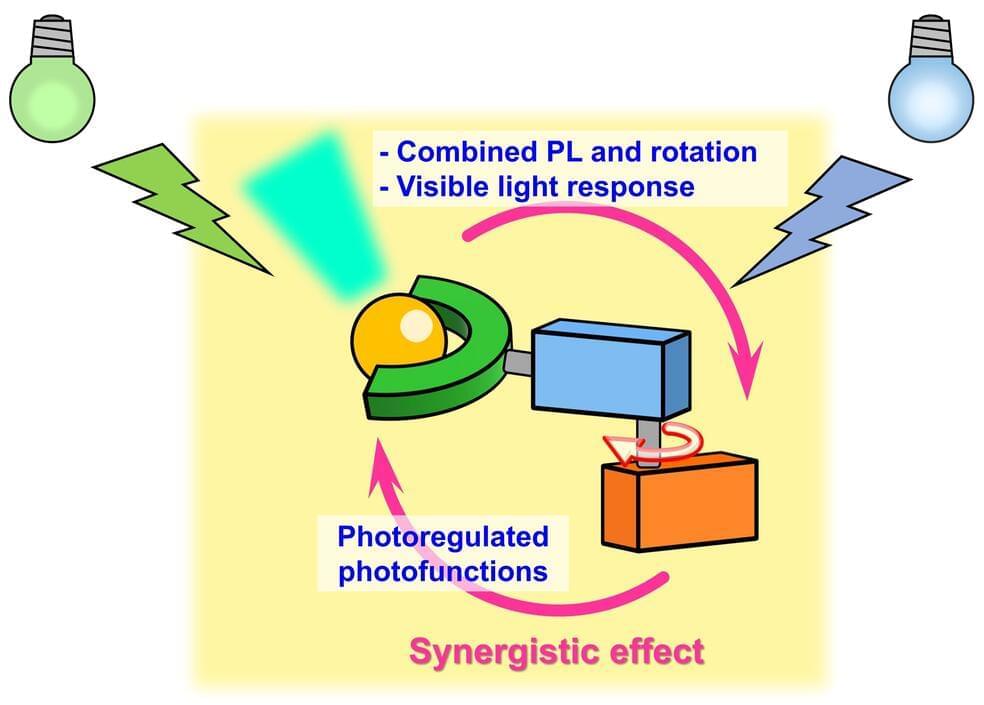Rotary molecular motors were first created in 1999, in the laboratory of Ben Feringa, Professor of Organic Chemistry at the University of Groningen. These motors are driven by light. For many reasons, it would be good to be able to make these motor molecules visible. The best way to do this is to make them fluoresce. However, combining two light-mediated functions in a single molecule is quite challenging. The Feringa laboratory has now succeeded in doing just that, in two different ways. These two types of fluorescing light-driven rotary motors were described in Nature Communications (September 30) and Science Advances (November 4).
“After the successful design of molecular motors in the past decades, an important next goal was to control various functions and properties using such motors,” explains Feringa, who shared in the Nobel Prize in Chemistry in 2016. “As these are light-powered rotary motors, it is particularly challenging to design a system that would have another function that is controlled by light energy, in addition to the rotary motion.”
Feringa and his team were particularly interested in fluorescence since this is a prime technique that is widely used for detection, for example in biomedical imaging. Usually, two such photochemical events are incompatible in the same molecule; either the light-driven motor operates and there is no fluorescence or there is fluorescence and the motor does not operate. Feringa says, “We have now demonstrated that both functions can exist in parallel in the same molecular system, which is rather unique.”
